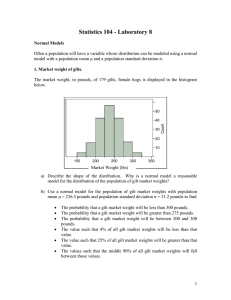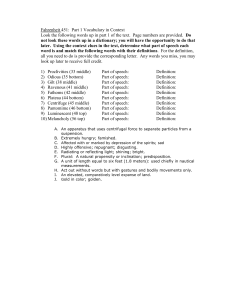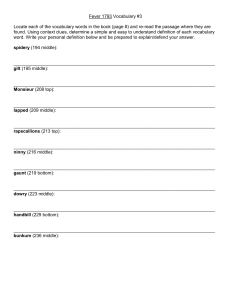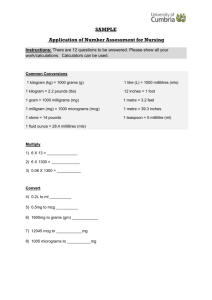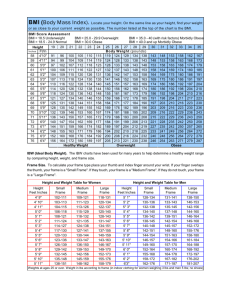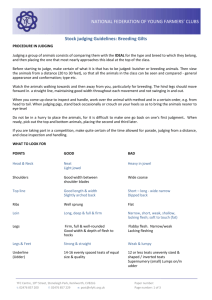Statistics 104 - Laboratory 8
advertisement
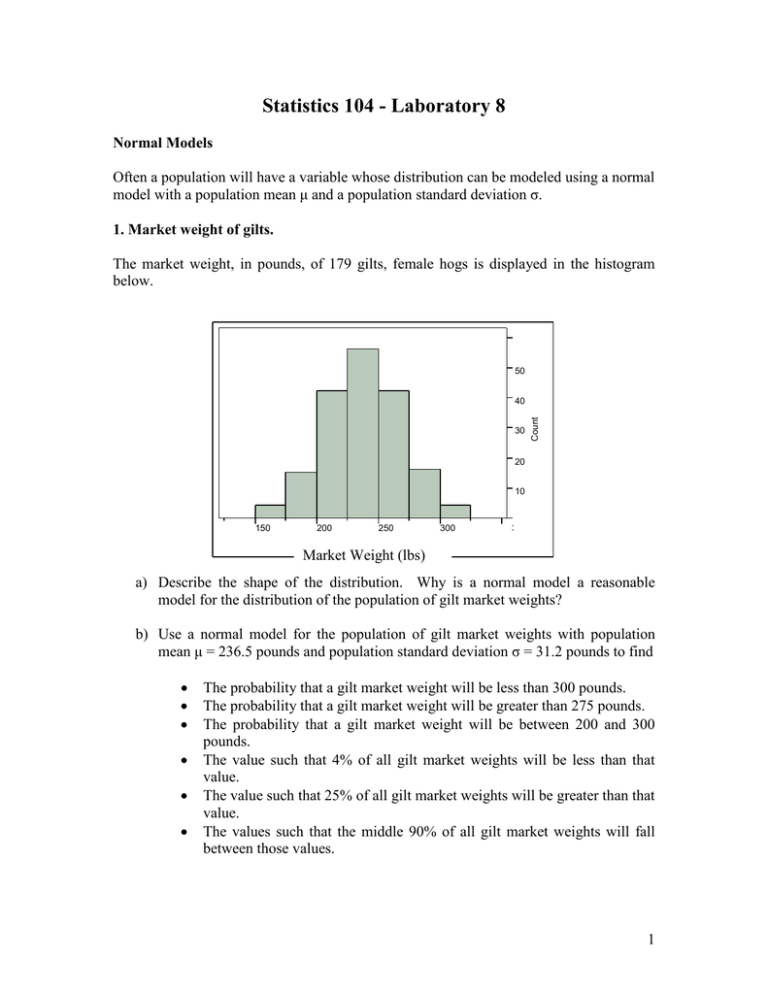
Statistics 104 - Laboratory 8 Normal Models Often a population will have a variable whose distribution can be modeled using a normal model with a population mean μ and a population standard deviation σ. 1. Market weight of gilts. The market weight, in pounds, of 179 gilts, female hogs is displayed in the histogram below. 50 30 Count 40 20 10 150 200 250 300 3 Market Weight (lbs) a) Describe the shape of the distribution. Why is a normal model a reasonable model for the distribution of the population of gilt market weights? b) Use a normal model for the population of gilt market weights with population mean μ = 236.5 pounds and population standard deviation σ = 31.2 pounds to find • • • • • • The probability that a gilt market weight will be less than 300 pounds. The probability that a gilt market weight will be greater than 275 pounds. The probability that a gilt market weight will be between 200 and 300 pounds. The value such that 4% of all gilt market weights will be less than that value. The value such that 25% of all gilt market weights will be greater than that value. The values such that the middle 90% of all gilt market weights will fall between those values. 1 2. Body Mass Index The Body Mass Index is calculated from a person’s weight, in kilograms, and height, in meters, and is positively correlated to the amount of body fat. BMI is often used to classify individuals into a Weight Status category. BMI BMI below 18.5 18.5 ≤ BMI< 25.0 25.0 ≤ BMI< 30.0 BMI 30.0 and above Weight Status Underweight Normal weight Overweight Obese Below is information on BMI for young males age 20 to 29 and young females age 20 to 29 in the early 1960’s and the early 2000’s. BMI mean, μ std. dev., σ Early 1960’s males females 24.3 22.2 5.4 5.8 Early 2000’s males females 26.6 26.8 6.0 7.0 The distribution of BMI values can be described using a normal model. a) What is the probability that a male chosen at random in the early 1960’s was obese? b) What is the probability that a male chosen at random in the early 2000’s was obese? c) What is the probability that a female chosen at random in the early 1960’s was normal weight? d) What is the probability that a female chosen at random in the early 2000’s was normal weight? e) What general trend do you see from the early 1960’s to the early 2000’s in terms of BMI and Weight status? 2 Statistics 104 - Laboratory 8 Group Answer Sheet Names of Group Members: ____________________, ____________________ ____________________, ____________________ 1. Gilt Market Weight a) Describe shape and comment on why a normal model is reasonable. b) The probability that a gilt market weight will be less than 300 pounds. c) The probability that a gilt market weight will be greater than 275 pounds. d) The probability that a gilt market weight will be between 200 and 300 pounds. e) The value such that 4% of all gilt market weights will be less than that value. f) The value such that 25% of all gilt market weights will be greater than that value. g) The values such that the middle 90% of all gilt market weights will fall between those values. 3 2. Body Mass Index a) What is the probability that a male chosen at random in the early 1960’s was obese? b) What is the probability that a male chosen at random in the early 2000’s was obese? c) What is the probability that a female chosen at random in the early 1960’s was normal weight? d) What is the probability that a female chosen at random in the early 2000’s was normal weight? e) What general trend do you see from the early 1960’s to the early 2000’s in terms of BMI and Weight status? 4
